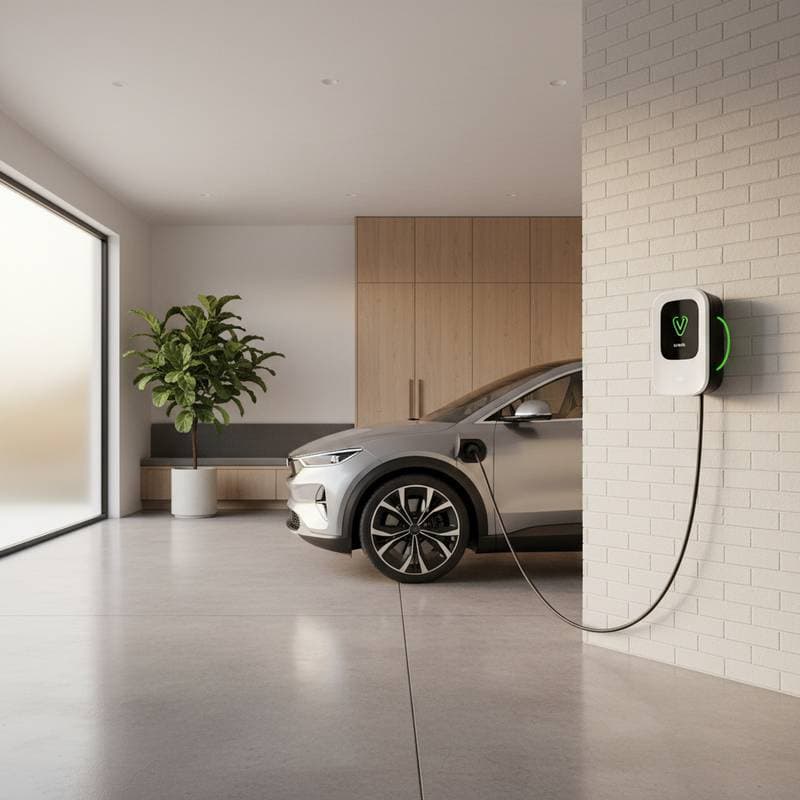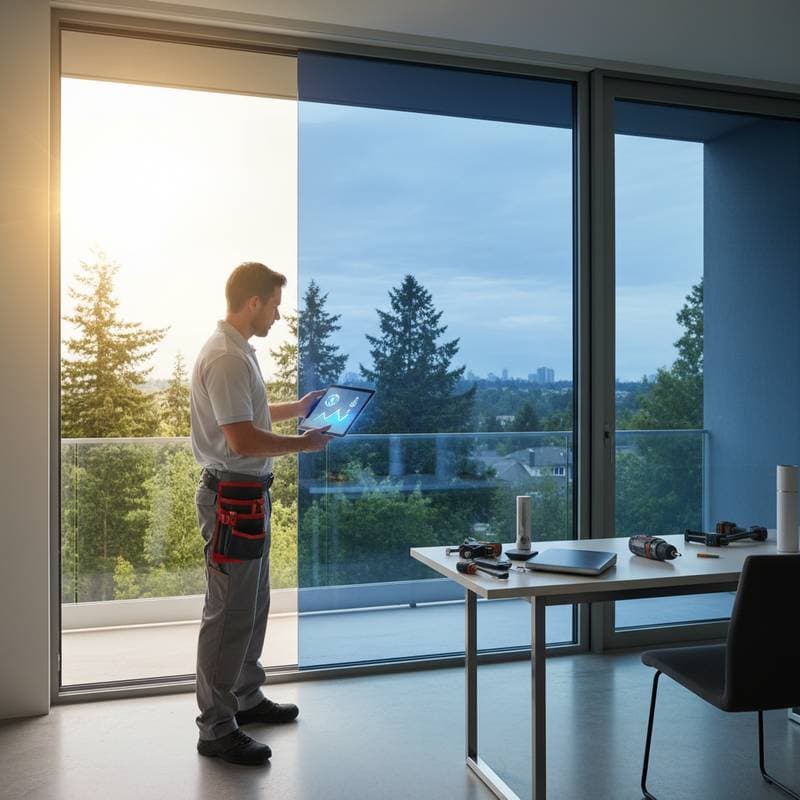EV Chargers: An 11 Percent Boost to Your Home Sale Price
Installing an electric vehicle charger enhances your home's resale value. Recent sales data indicate that properties equipped with a Level 2 charger sell for approximately 11 percent more than similar homes without this feature. This upgrade proves particularly beneficial for owners in regions with high EV adoption rates or for those preparing to list their property soon. It also supports households that currently own electric vehicles or intend to purchase one in the near future.
An EV charger represents modern electrical infrastructure. Prospective buyers view it as an immediate convenience that eliminates their need for separate installation and associated expenses. For sellers, this addition translates to elevated sale prices and expedited transaction timelines.
Pros and Cons
Pros
- Increases home resale value by about 11 percent
- Draws in environmentally conscious and EV-prepared buyers
- Provides convenient overnight charging at home
- Reduces long-term fueling expenses relative to gasoline vehicles
- Qualifies for various local rebates and tax incentives
Cons
- Initial expenses may surpass $2,000, especially with electrical panel modifications
- Requires obtaining permits and passing inspections
- Occupies garage space and introduces additional wiring
- Offers limited benefits if the property sells before widespread EV adoption in the local market
DIY Installation Versus Professional Service
A Level 1 charger requires minimal effort. Simply connect it to an existing outlet and secure the cord properly. In contrast, a Level 2 charger demands a dedicated 240-volt circuit, appropriate wire gauge, and a specific breaker size.
DIY Difficulty: High for Level 2 installations.
Estimated Time: Two to six hours when handled by a professional; considerably longer for independent efforts.
Required Tools: Voltage tester, conduit materials, wire cutters, drill, and torque wrench.
Potential Risks: Electrical shock or non-compliance with building codes if executed improperly.
Circumstances That Warrant Professional Assistance
- Electrical panel lacks available breaker slots
- Wiring distance exceeds 25 feet
- Local regulations mandate a permit
- Desire for comprehensive warranty coverage on the work
Licensed electricians verify correct amperage, grounding, and labeling. They manage all necessary inspection documentation as well.
Step-by-Step Installation Guide
- Verify Compatibility. Examine your vehicle's charging port type and its power specifications.
- Evaluate Panel Capacity. A Level 2 charger necessitates a dedicated 240-volt circuit rated at 40 to 60 amps.
- Select Charger Location. Position it near the vehicle's charging port, ensuring the cable extends within 18 feet.
- Obtain Permits. Consult your local building authority to understand specific requirements.
- Engage a Qualified Electrician. Solicit at least three detailed quotes for the project.
- Execute Circuit and Mounting. The electrician installs new wiring, adds conduit, and secures the charger to a wall or post.
- Conduct Testing. Connect the vehicle to validate amperage delivery and safety mechanisms.
- Arrange for Inspection. Most jurisdictions demand final approval for electrical modifications.
- Document and Label. Clearly mark the new breaker and retain all installation records for future property disclosures.
Maintenance and Expected Lifespan
Home EV chargers demand minimal upkeep. With consistent use, anticipate a service life of eight to 12 years.
Routine Maintenance Tasks
- Clean the connector and cable every few weeks.
- Check for cracks, damaged wires, or unsecured connections.
- Remove dust from vents and the housing unit.
- Annually test the ground fault protection via the integrated reset button.
Smart chargers occasionally require firmware updates via their companion application. Standard warranties span three to five years, with options for paid extensions.
Should the charger experience connectivity failures or frequent breaker trips, summon an electrician to diagnose load imbalances or terminal issues.
Alternative Charging Solutions
Level 1 Charging Exclusively
This option incurs no installation fees. It suits owners with brief daily commutes. However, its slow speed proves inadequate for those traveling over 30 miles per day.
Solar-Powered Carport
This setup integrates solar panels with EV charging capabilities. Though the initial investment often exceeds $10,000, it enhances renewable energy integration and offsets electricity costs.
Reliance on Nearby Public Stations
Public options offer accessibility if stations lie close to home. Peak-hour unreliability remains a drawback. This approach yields no uplift in home value.
Shared Chargers in Multi-Unit Properties
Ideal for condominiums or apartments, these require homeowners association approval. They elevate value across the entire complex rather than an individual unit.
Considerations for Local Conditions
Climate Impacts
In colder regions, charging efficiency diminishes, necessitating heated enclosures or weatherproofing. Coastal environments call for corrosion-resistant components and sealed casings to withstand salt exposure.
Building Codes and Permitting
Certain areas insist on load calculations prior to approval. Others specify GFCI breakers or precise mounting elevations. Adhere to National Electrical Code Article 625, which governs EV equipment installation and safety protocols.
Regional Labor Costs
Electrician rates range from $75 to $150 hourly. Urban zones with elevated demand incur higher fees. Rural settings may include travel fees. Regions promoting EV use frequently provide rebates to mitigate these expenses.
Return on Investment and Resale Implications
A permanently installed Level 2 charger yields a return of 60 to 100 percent via increased resale value and heightened buyer appeal. Properties featuring chargers typically close sales more rapidly and command premium offers from technology-oriented and eco-focused purchasers.
Primary Factors Influencing Value
- Prevalence of EV ownership in the locality
- Charger's placement and ease of access
- Proof of permitted and inspected installation
- Integration of smart functionalities and broad vehicle compatibility
In saturated markets, a prominently displayed charger within a tidy garage acts as a compelling selling point. Buyers interpret it as evidence of a contemporary, forward-thinking residence.
Essential Safety Measures
EV chargers manage substantial electrical loads. Approach them with the caution reserved for large appliances or heating systems.
Fundamental Safety Practices
- Ground the circuit in accordance with NEC guidelines.
- Assign a dedicated breaker; avoid sharing with other circuits.
- Refrain from using extension cords or adapters.
- Position the cable away from floors to minimize tripping hazards or moisture contact.
- Discontinue use if the unit overheats or trips repeatedly until professional evaluation.
- Label the disconnect switch for quick emergency access.
For detached garages, bury conduit trenches to the prescribed depth and backfill securely. Underground wiring must conform to local standards for depth and material types.
Frequently Asked Questions
How long does home charging take for an EV?
A Level 2 charger delivers 20 to 30 miles of range per hour, varying by amperage and model. Full charges typically complete overnight.
Is a permit necessary for a home EV charger?
Level 2 setups often require one in many cities to confirm wiring integrity, breaker adequacy, and grounding. Verify with local authorities before proceeding.
Can chargers be installed outdoors?
Affirmative, provided the unit carries an outdoor rating. Select models with NEMA 3R or superior enclosure for rain and debris resistance.
Will my electrical panel support a charger?
Properties with 200-amp service generally accommodate it. Vintage 100-amp systems might require upgrades. Electricians perform load assessments to determine feasibility.
What rebates exist for installations?
Utilities and states provide $200 to $1,000 toward equipment and labor. Review your provider's site or energy initiative resources for active programs.
Advancing Your Home with an EV Charger
For homeowners eyeing a sale or already operating an electric vehicle, a Level 2 charger stands as a strategic enhancement. It appeals to contemporary buyers, ensures charging ease, and elevates property value by roughly 11 percent.
Initiate the process with a panel assessment, followed by bids from certified electricians. Evaluate charger models, secure approvals, and archive documentation for disclosure purposes. Upon completion, enjoy seamless daily use alongside improved market positioning.
This upgrade ranks among the most straightforward sustainable modifications, delivering tangible financial gains. Review regulations, obtain estimates, and incorporate the installation into your property enhancement plans.








